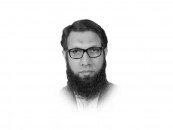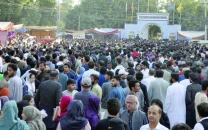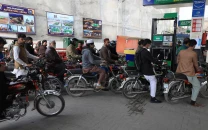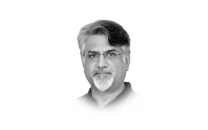Radicalisation of the young
Radicalisation is one way the poor and dispossessed find voice as it demands action to challenge the status quo.

The writer is a PhD in Conflict Studies and a security analyst
This demographic trajectory allows young Pakistanis to be swayed towards radicalisation and adds support for militant agendas from among the Pakistani populace, particularly when there is high unemployment and income disparity. This income disparity has manifested itself in the ratio of the highest to the lowest income quintiles ranging from 3.76 in 2001 to 4.15 in 2005, and further to 4.2 in 2005-06. Since poorer households in Pakistan tend to have a higher number of children on average, especially in rural areas, this implies that an exceptionally large number of young men and women are being forced to live below or around the poverty line. Furthermore, at least one tenth of the rural communities do not even have access to basic facilities, which adds incremental stress to an already overburdened economy. The children who come from these families are the ultra-poor who seem destined to have a grim future, particularly with regard to employment. The high level of underemployment for the young from lower socio-economic classes causes an escalating strain. While the growing economy has expanded the labour market and the unemployment rate has declined to around 5.32 per cent, the modest improvement cannot cope with the rapidly expanding youth bulge. This alienates the poor segment of the youth bulge, since the majority of non-elite young men can only find relatively menial, unfulfilling jobs. Since the richest 20 per cent of the population is continuing to grow richer, the sense of alienation among the poor young men is not surprising and forces them to look for other alternatives.
Radicalisation is one of the ways that the poor and the dispossessed find voice, since the path to radicalisation demands action to challenge the status quo, often in the form of violent activism. This violent action may become terrorism in its extreme manifestations, or smolder within the non-elite youth in the form of extremism. As research reveals, there are different trajectories to determinant variables of extremism and terrorism in different theatres. This may very well be the case in Pakistan where poverty, rather than educational attainment, may be a radicalising factor. It is also debatable that even employed persons may be facing crippling poverty in some areas of Pakistan, particularly the tribal areas. It seems that a majority of young men from rural backgrounds can only find relatively menial jobs. Over time, the private sector’s already constrained capacity to accommodate the youth cohort in employment is shrinking even more. Even though there has been some improvement in the macroeconomic structure of the country, it is inadequate to keep pace with the growth of the youth cohort, which is one of the largest in the world, assessed by international comparison of youth, including children, as a percentage of overall population. Either way, policymakers would avoid the socio-economy of youth radicalisation in Pakistan at their own peril.
Published in The Express Tribune, January 8th, 2013.















COMMENTS
Comments are moderated and generally will be posted if they are on-topic and not abusive.
For more information, please see our Comments FAQ